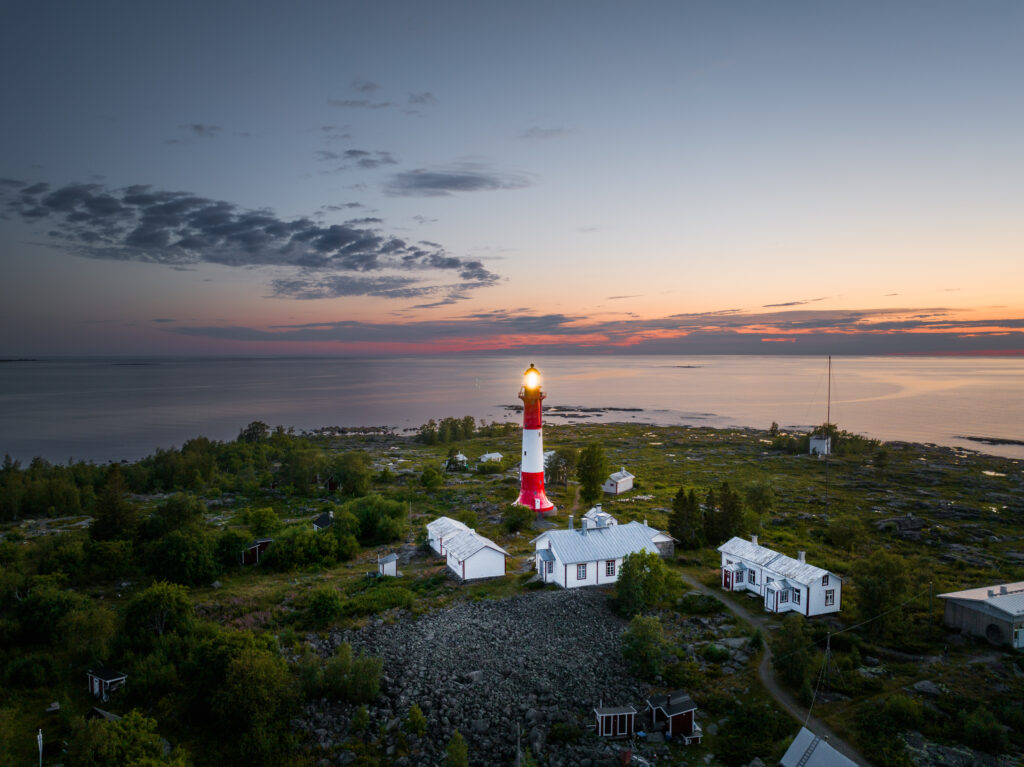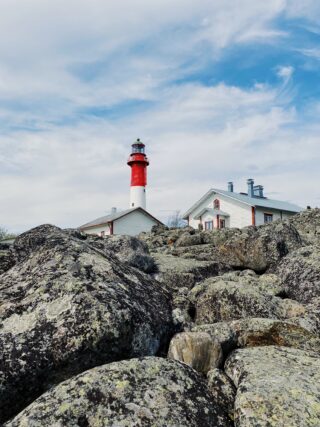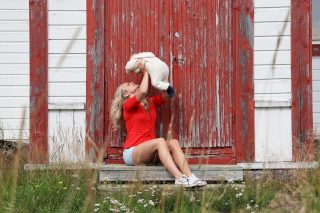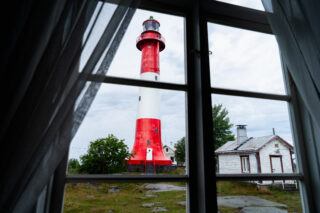Often a small community develops around lighthouses, the households of the Master of the Lighthouse and the lighthouse keepers. On Tankar, the Master and three keepers lived in residences constructed near the lighthouse.
Life on the island was grim. Potatoes were cultivated in small plots cleared in depressions in the rock, soil had to be brought from the mainland. The stunted grass grown on the island was sufficient fodder for a single cow. With regards to fishing they were self-sufficient, and in winter went hunting seals.
The lighthouse keepers’ tasks included maintaining the beacon and lighting equipment, cleaning the structures and minor repair work. It was also the lighthouse keepers’ duty to deliver the Master’s letters. Precise instructions were issued, particularly regarding maintaining the lighthouse’s lighting equipment, as dirt and dust reduced the effectiveness of the lens. Smoking and all activities which might generate dust were strictly forbidden in the beacon area. The lighthouse’s beacon was normally lit at sunset and extinguished at dawn.
The Master’s most important task was the upkeep of the lighthouse structures and maintenance of the equipment as well as ensure that the lighthouse keepers maintained the lighting properly. If the lighthouse had a fog bell, he was also to ensure that an audible signal was produced when visibility deteriorated. Masters of the Lighthouse were generally educated individuals and, in addition to their official duties, acted as a teacher to the island’s children, as a legal and spiritual advisor, and even as a nurse.
Construction of the Master´s and keepers´ houses began in 1887, shortly before the lighthouse itself was completed. The houses as well as the warehouse and sauna built next to them, still stand in the heart of the old lighthouse community. Today, the buildings are used for accommodation.
The typhoon room next to the lighthouse once served as a signalling place for passing ships. In foggy times, the hatches at the end of the house were opened and warning sounds were sounded from the large “fog horns” to the approaching ships. In 1977, the Sea Rescue Society Kokkolan Meripelastajat ry was given use of the piloting station’s old foghorn room.
The stone landmark
Since around 1750 there has been a seamark on Tankar, financed by the burghers and shipowners of Kokkola. On top of this 11-foot (roughly 3.5m) high stone landmark there was a barrel affixed to the end of a 20-foot (approx. 6m) pole. In 1825 a wooden marker beacon was erected next to the stone landmark. It was painted red, in the form of a truncated pyramid, and at either end of the roof ridge there was a pole with a barrel as the main marker.
The stone landmark has been preserved in the yard of the lighthouse community. A large number of stones from the landmark were used as foundation in the construction of the lighthouse. Visitors to Tankar Island have made their contribution to the current dimensions of the seamark. The custom was that when visiting the island for the first time, as large a stone as possible must be carried from the shore to the mound.



